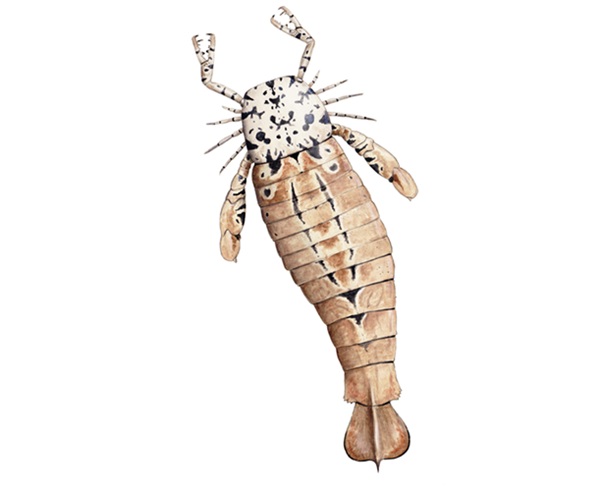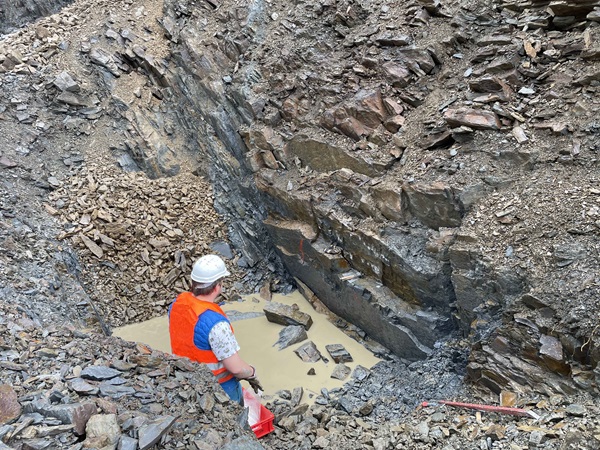 Reconstruction of sea scorpion;
Credit: MNHN
Reconstruction of sea scorpion;
Credit: MNHN
A scientific excavation recently took place in the Rinnen quarry in Consthum, led by Luxembourg's National Museum of Natural History (Musée national d'histoire naturelle Luxembourg - MNHN), in collaboration with experts from the General Directorate of Cultural Heritage Rhineland-Palatinate and Palaeontologica Belgica.
In a 406-million-year-old layer of rock, numerous remains of animals that lived in an ancient river delta were found.
The discovery of the remains of an enormous sea scorpion was particularly spectacular. Several segments connected, with a total length of almost 50 cm, suggest that the body of the animal measured one and a half meters.
“Discoveries of sea scorpions this large are very rare in the world, especially when it comes to fragments preserved in anatomical connection,” explained Dr Ben Thuy, a palaeontologist at the MNHN and head of the excavations. Giant sea scorpions were among the top predators of the time and are among the largest arthropods to have ever lived. “The fact that we were able to find and recover these remains was only possible thanks to the committed and energetic support of the Rinnen company, especially the quarry collaborators on site,” he added.
Recovery proved extremely difficult due to the hardness of the rock, the fragility of the fossil and the presence of water at the excavation site, the MNHN noted. Thanks to equipment from the Rinnen company and the help of scientific collaborators (citizen scientists who work voluntarily for the MNHN), the excavation was carried out successfully.
In the coming months, specialists will prepare and examine the remains. There are plans for the fossil to later be presented to the public at the MNHN.









